Abstract
Functions of long and short particles of five different tobacco rattle virus (TRV) systems were studied by complementation experiments with the corresponding long and short species of ribonucleic acid (RNA). The progeny of long RNA species alone was proteinless or “free” infectious long RNA, whereas short RNA species alone did not replicate by themselves but appeared to be dependent on long RNA for replication. When both types of RNA derived from the same isolate were inoculated together, particulate virus with long and short particles was produced in more than 50% of the resulting primary infections. These virus systems obtained by homologous complementation resembled the parent isolates in all their characteristics. In addition, heterologous complementation tests were performed with long and short RNA, each derived from another isolate. Heterologous interaction could be observed in only 2 out of 20 possible combinations. As a result, two “mixed” TRV systems with respect to their particle length distributions were obtained, since their long and short particles resembled the ones from the other isolate. The symptoms produced by these mixed viruses were determined by the corresponding long RNA and appeared not to be influenced by the heterologous short one. However, the protein coat of both particles of the “mixed” viruses was specified by the corresponding noninfectious short RNA. Therefore, TRV is a system of at least two functionally defective and mutually complementing components which appear to be specialized in early and late functions.
Full text
PDF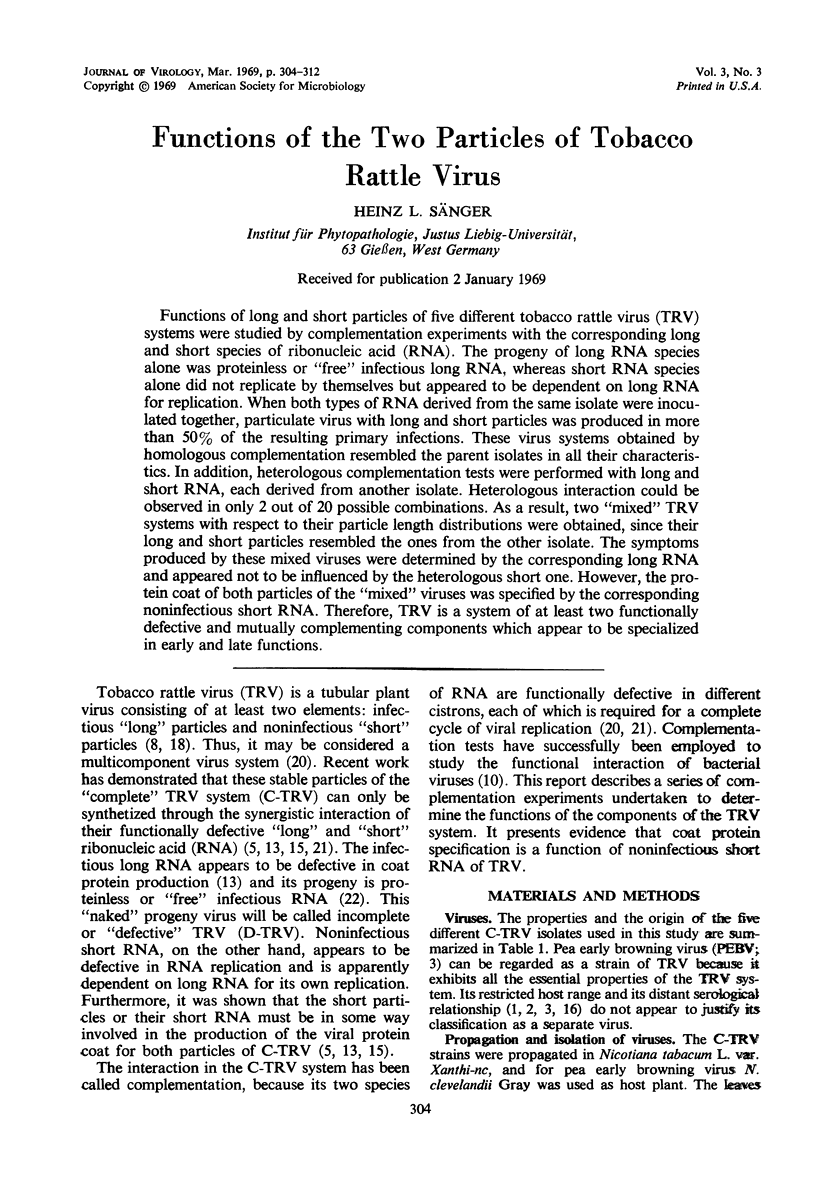
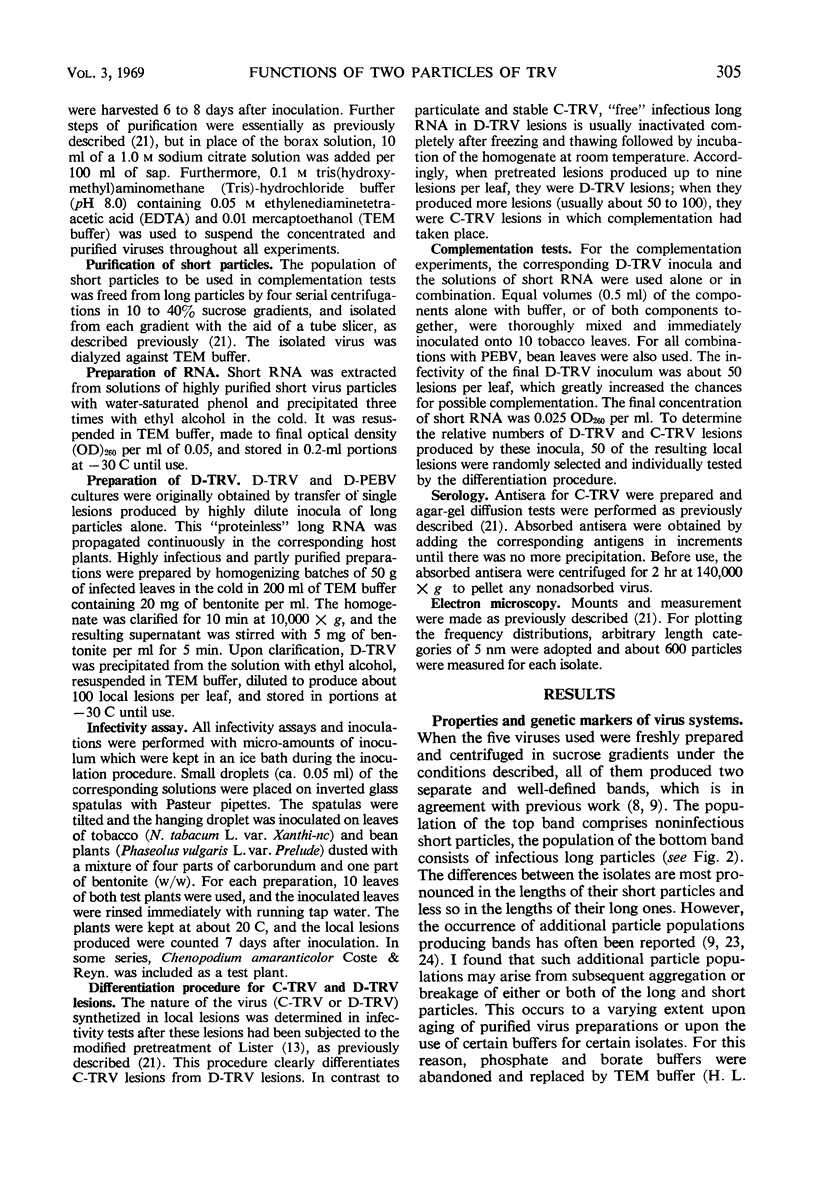
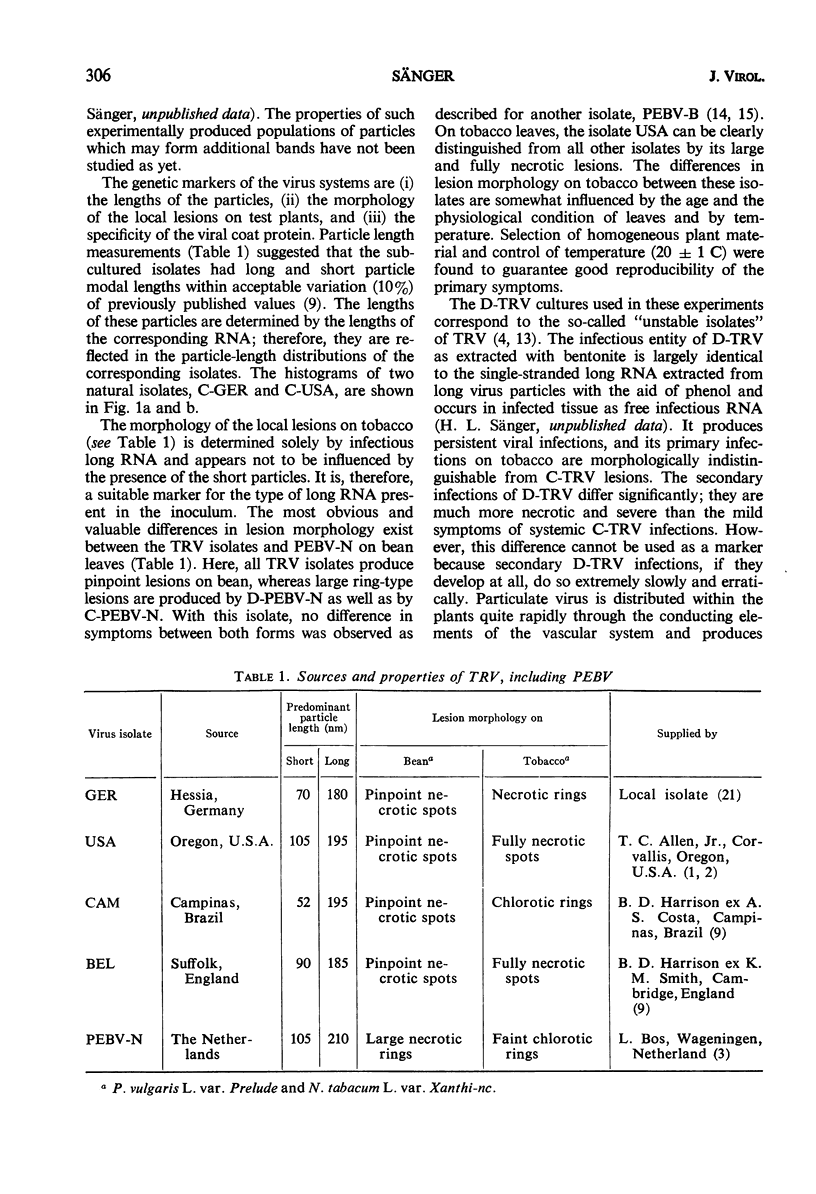
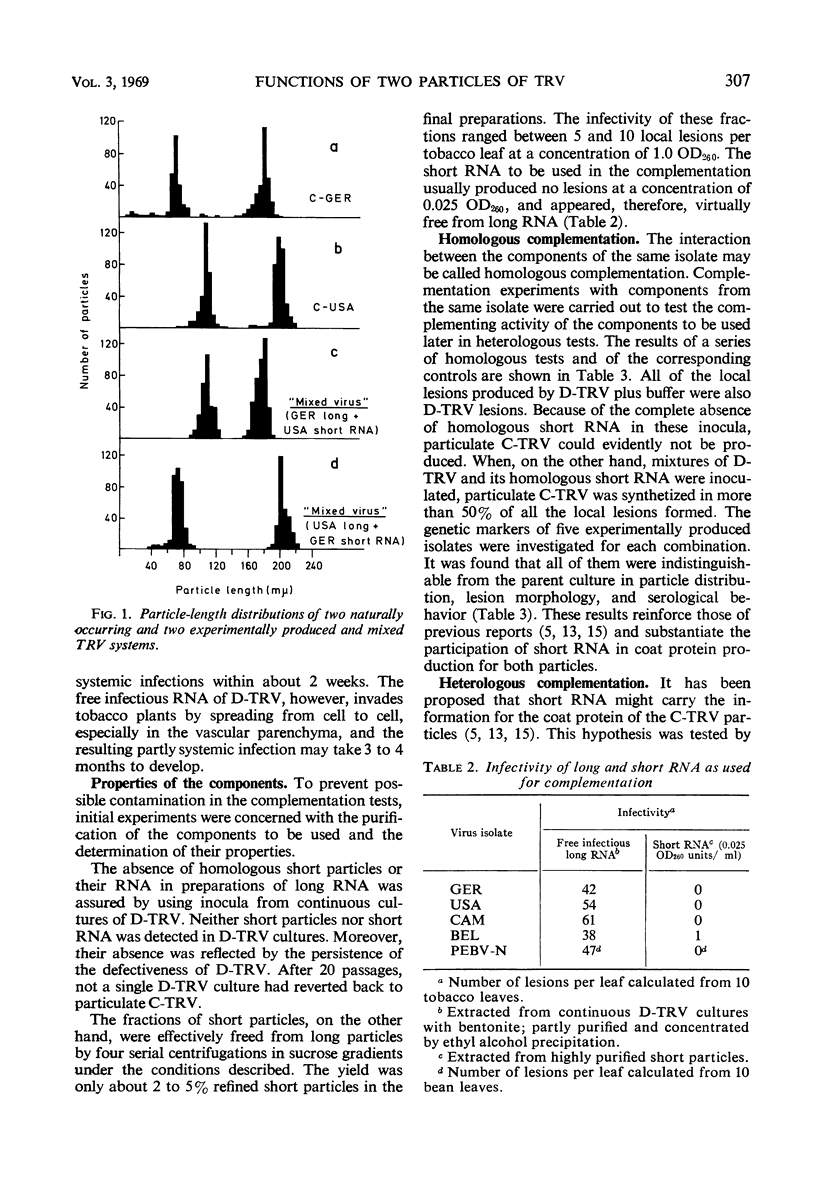
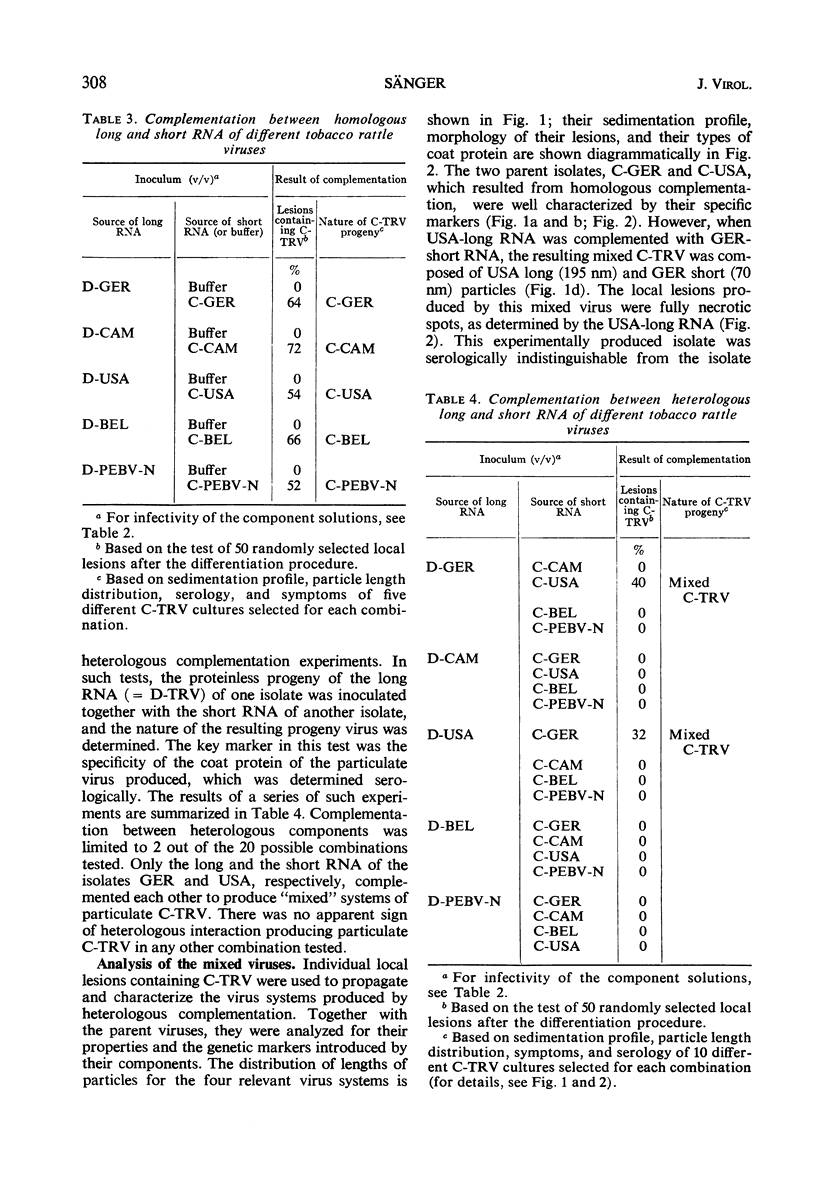
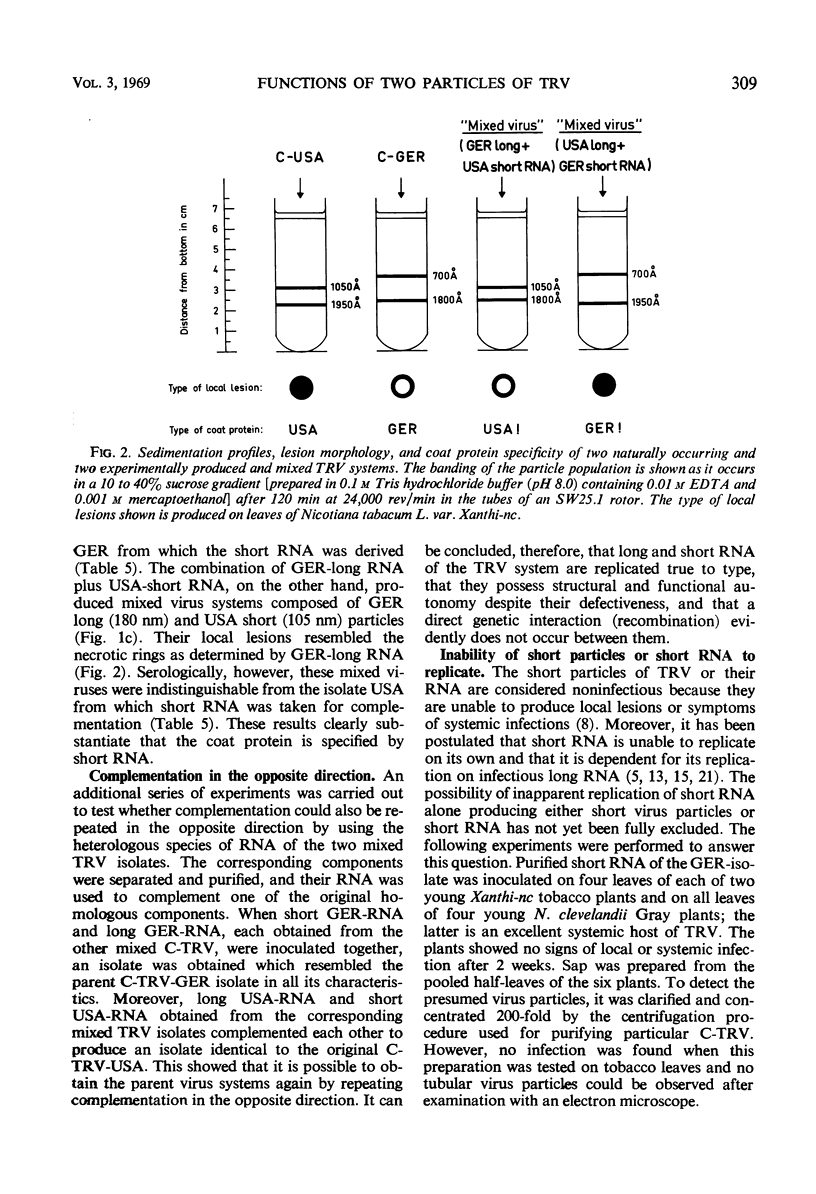

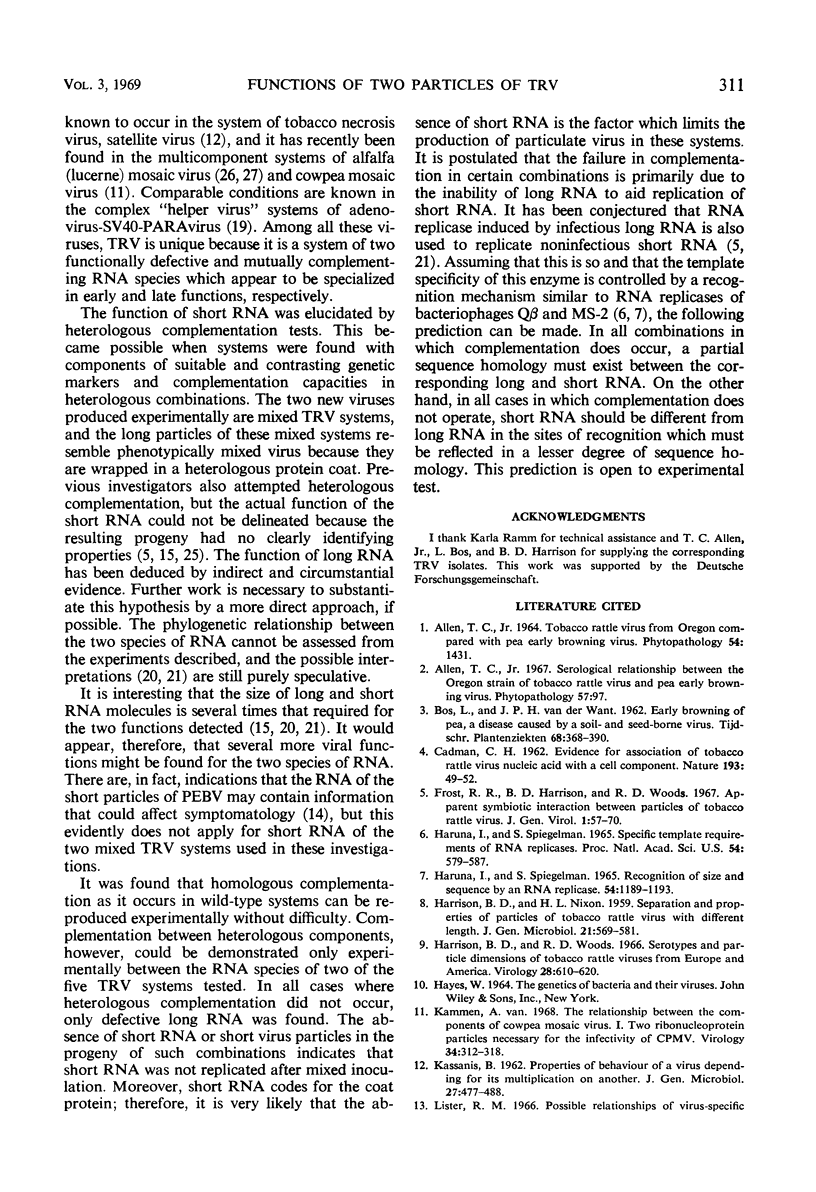
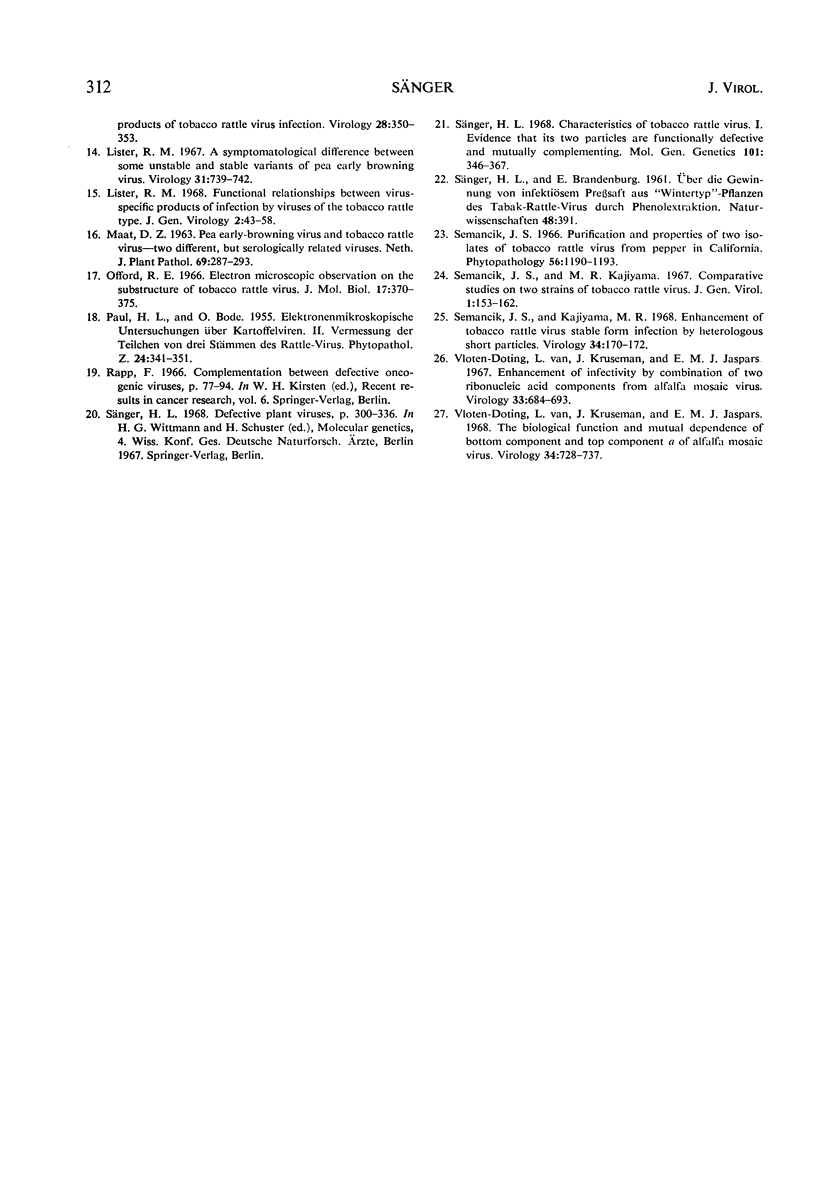
Selected References
These references are in PubMed. This may not be the complete list of references from this article.
- CADMAN C. H. Evidence for association of tobacco rattle virus nucleic acid with a cell component. Nature. 1962 Jan 6;193:49–52. doi: 10.1038/193049a0. [DOI] [PubMed] [Google Scholar]
- HARRISON B. D., NIXON H. L. Separation and properties of particles of tobacco rattle virus with different lengths. J Gen Microbiol. 1959 Dec;21:569–581. doi: 10.1099/00221287-21-3-569. [DOI] [PubMed] [Google Scholar]
- Harrison B. D., Woods R. D. Serotypes and particle dimensions of tobacco rattle viruses from Europe and America. Virology. 1966 Apr;28(4):610–620. doi: 10.1016/0042-6822(66)90246-7. [DOI] [PubMed] [Google Scholar]
- Haruna I., Spiegelman S. Recognition of size and sequence by an RNA replicase. Proc Natl Acad Sci U S A. 1965 Oct;54(4):1189–1193. doi: 10.1073/pnas.54.4.1189. [DOI] [PMC free article] [PubMed] [Google Scholar]
- Haruna I., Spiegelman S. Specific template requirments of RNA replicases. Proc Natl Acad Sci U S A. 1965 Aug;54(2):579–587. doi: 10.1073/pnas.54.2.579. [DOI] [PMC free article] [PubMed] [Google Scholar]
- KASSANIS B. Properties and behaviour of a virus depending for its multiplication on another. J Gen Microbiol. 1962 Mar;27:477–488. doi: 10.1099/00221287-27-3-477. [DOI] [PubMed] [Google Scholar]
- Lister R. M. A symptomatological difference between some unstable and stable variants of pea early browning virus. Virology. 1967 Apr;31(4):739–742. doi: 10.1016/0042-6822(67)90210-3. [DOI] [PubMed] [Google Scholar]
- Lister R. M. Possible relationships of virus-specific products of tobacco rattle virus infections. Virology. 1966 Feb;28(2):350–353. doi: 10.1016/0042-6822(66)90161-9. [DOI] [PubMed] [Google Scholar]
- Offord R. E. Electron microscopic observations on the substructure of tobacco rattle virus. J Mol Biol. 1966 Jun;17(2):370–375. doi: 10.1016/s0022-2836(66)80148-1. [DOI] [PubMed] [Google Scholar]
- Semancik J. S. Purification and properties of two isolates of tobacco rattle virus from pepper in California. Phytopathology. 1966 Oct;56(10):1190–1193. [PubMed] [Google Scholar]
- Sänger H. L. Characteristics of tobacco rattle virus. I. Evidence that its two particles are functionally defective and mutually complementing. Mol Gen Genet. 1968 May 17;101(4):346–367. doi: 10.1007/BF00436232. [DOI] [PubMed] [Google Scholar]
- van Kammen A. The relationship between the components of cowpea mosaic virus. I. Two ribonucleoprotein particles necessary for the infectivity of CPMV. Virology. 1968 Feb;34(2):312–318. doi: 10.1016/0042-6822(68)90241-9. [DOI] [PubMed] [Google Scholar]
- van Vloten-Doting L., Kruseman J., Jaspars E. M. The biological function and mutual dependence of bottom component and top component a of alfalfa mosaic virus. Virology. 1968 Apr;34(4):728–737. doi: 10.1016/0042-6822(68)90093-7. [DOI] [PubMed] [Google Scholar]


